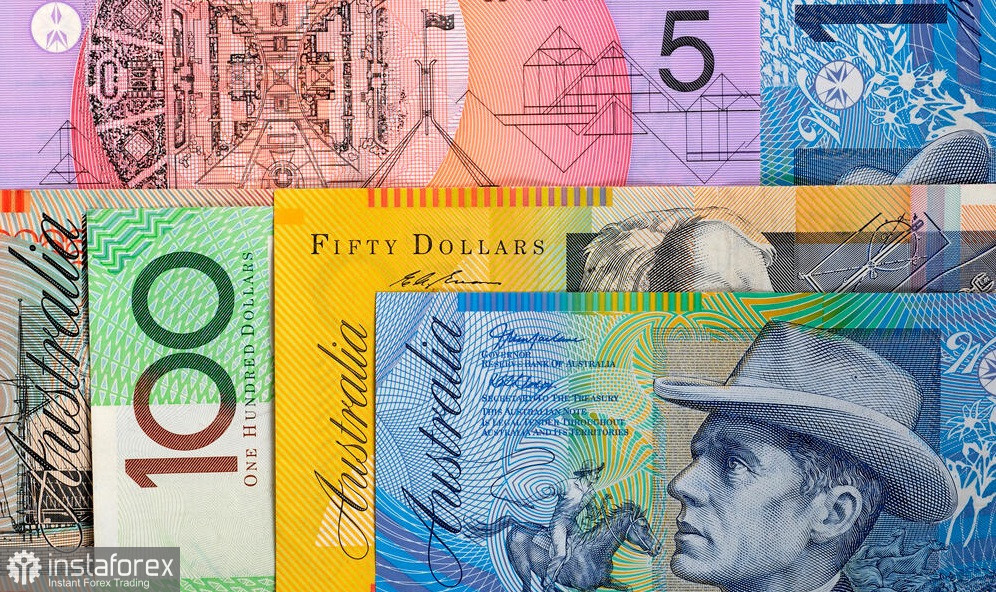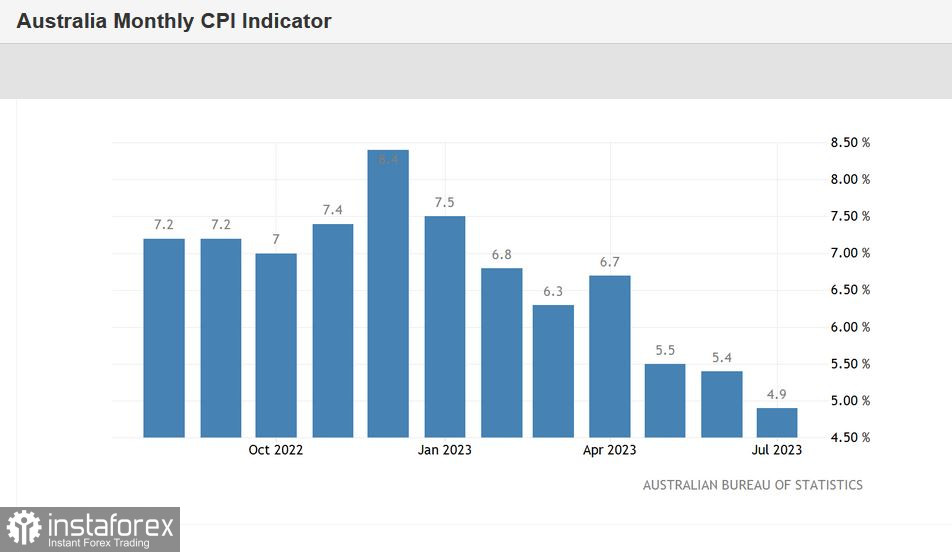The AUD/USD pair is stuck in the 0.6380-0.6450 range. In general, the current fundamental background allows bulls to expect new price gains, if not for one "but" – the greenback. The US dollar's position is quite strong, and this serves as an obstacle to the development of an upward movement. However, AUD/USD bears are also unable to take advantage of the greenback's strength: as soon as the pair declines into the 63-figure area, sellers take profits, thus impeding the bearish momentum.

In other words, the pair is in a deadlock situation. To develop an upward movement, buyers need to overcome the level of 0.6450 (the Tenkan-sen line on the daily chart), and in order to restore the downtrend, sellers need to push through the support level of 0.6370 (the lower Bollinger Bands line on the same timeframe). Both are challenging tasks, given the current fundamental picture. Traders need a strong informational impetus that will push the pair out of the range – either to the south or to the north.
The Federal Reserve's hawkish stance is on the greenback's side. The results of the latest Fed meeting supported the US currency. The central bank updated its dot plot, indicating that it intends to raise interest rates once again by the end of this year, either at the November or December meeting. Fed Chair Jerome Powell confirmed these intentions, citing the high level of inflation. However, Powell tied future central bank decisions to the dynamics of key inflation indicators.
This is why the core Personal Consumption Expenditures Price Index, which will be published on Friday (September 29), may trigger strong volatility among dollar pairs. According to preliminary forecasts, this crucial inflation indicator is expected to decrease to 3.9% YoY, which is the lowest value since September 2021. In such a case, the dollar bulls may come under pressure because the likelihood of a rate hike in November will significantly decrease (at the moment, this probability is around 30%, according to the CME FedWatch Tool). Conversely, if the index starts to gain momentum and goes against forecasts, hawkish expectations regarding the Fed's future course of actions will increase.
Take note that inflation could provide support to the aussie. In this case, we're talking about the Australian Consumer Price Index. The inflation data for August will be published on Wednesday. The market forecast was for a 5.2% increase in the reported period. If the release comes in at least at the forecasted level (not to mention the "green zone"), the Australian dollar could receive significant support. The key point here is that the CPI has been consistently declining for the past three months, reaching 4.9% in July. If the CPI grows, it will be a "warning sign" for the Reserve Bank of Australia.
It's important to recall the main points from the recently published minutes of the RBA's September meeting. The text mentioned that the Board considered two scenarios: 1) a 25-basis-point rate hike; 2) keeping the rate unchanged. In the end, the majority of the RBA officials agreed with the arguments in favor of maintaining the status quo. However, simultaneously, the central bank emphasized that "some further tightening may be required" in the future if inflation proves to be "more persistent than expected."
Clearly, the August CPI will be viewed by the market in terms of a potential RBA reaction. If the gauge exceeds expectations, buyers of AUD/USD will have an informational catalyst for an upward movement.

Do recall that the recent Australian labor data was also in favor of the aussie. Unemployment in August remained at the July level (i.e., at 3.7%), despite forecasts of an increase to 3.9%. The employment figure also grew significantly, reflecting an increase of almost 65,000, while the forecast was for an increase of only 26,000. The labor force participation rate increased to 67.0%, which is the highest result in the history of these observations.
In addition, Australia's GDP data, which was published in early September, also supported the aussie, although the report was somewhat contradictory. The country's GDP increased by 2.1% year-on-year in the second quarter. On one hand, this figure shows a downtrend (the result for the first quarter was 2.4%, and for the fourth quarter of 2022, it was 2.6%). On the other hand, experts had forecasted a weaker result for the second quarter, around 1.8% year-on-year.
Therefore, the Australian dollar may emerge in the near future. If Australia's inflation report comes out in the "green zone" (or at least in line with forecasts), and the report on the core PCE index comes out in the "red zone" (or at least in line with forecasts), buyers of AUD/USD may not only test the resistance level at 0.6450 (the Tenkan-sen line on the daily chart) but also approach the next price barrier at 0.6500 (the upper line of the Bollinger Bands indicator on the same timeframe). So, all eyes are on inflation!
 English
English 
 Русский
Русский Bahasa Indonesia
Bahasa Indonesia Bahasa Malay
Bahasa Malay ไทย
ไทย Español
Español Deutsch
Deutsch Български
Български Français
Français Tiếng Việt
Tiếng Việt 中文
中文 বাংলা
বাংলা हिन्दी
हिन्दी Čeština
Čeština Українська
Українська Română
Română

